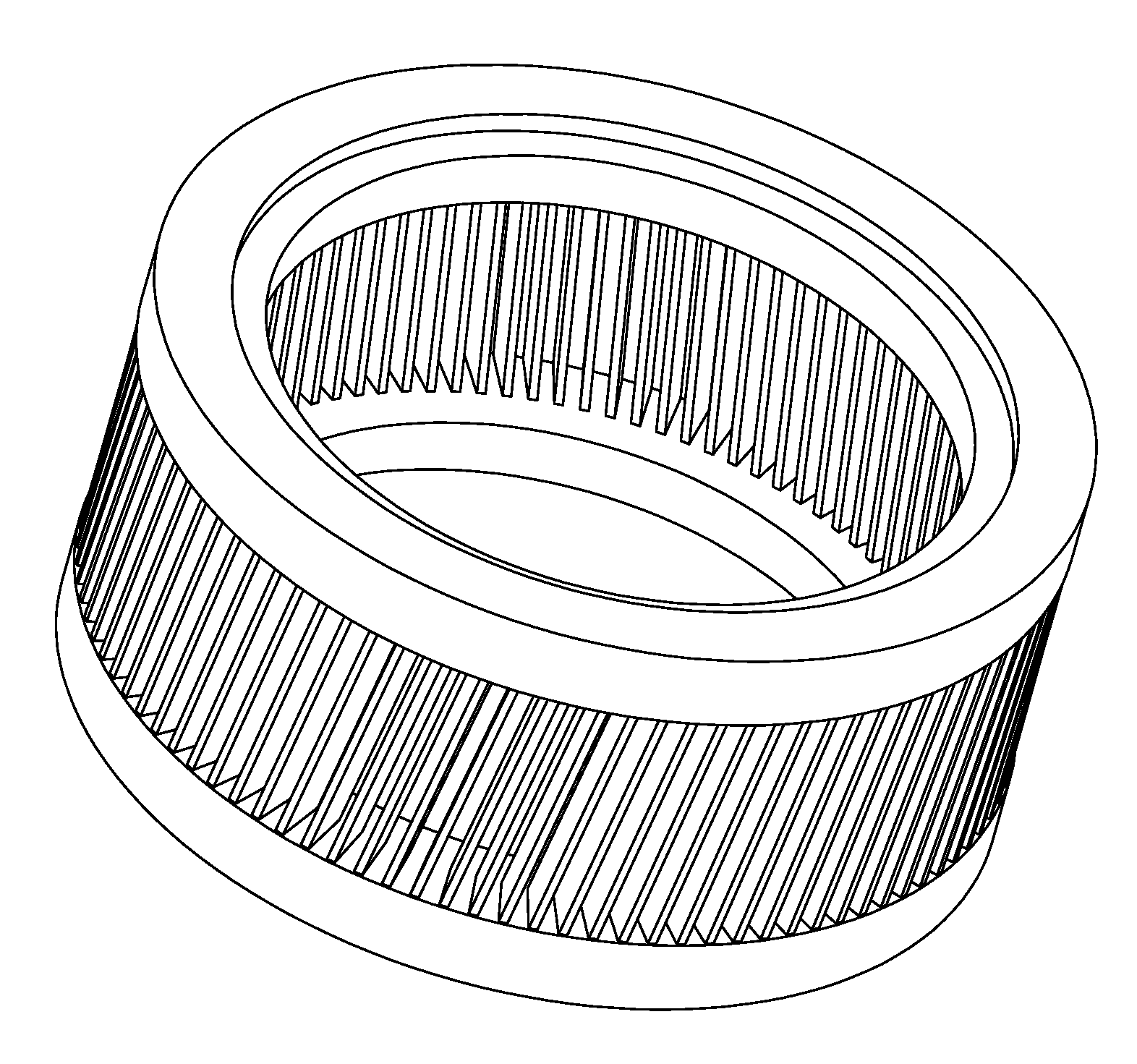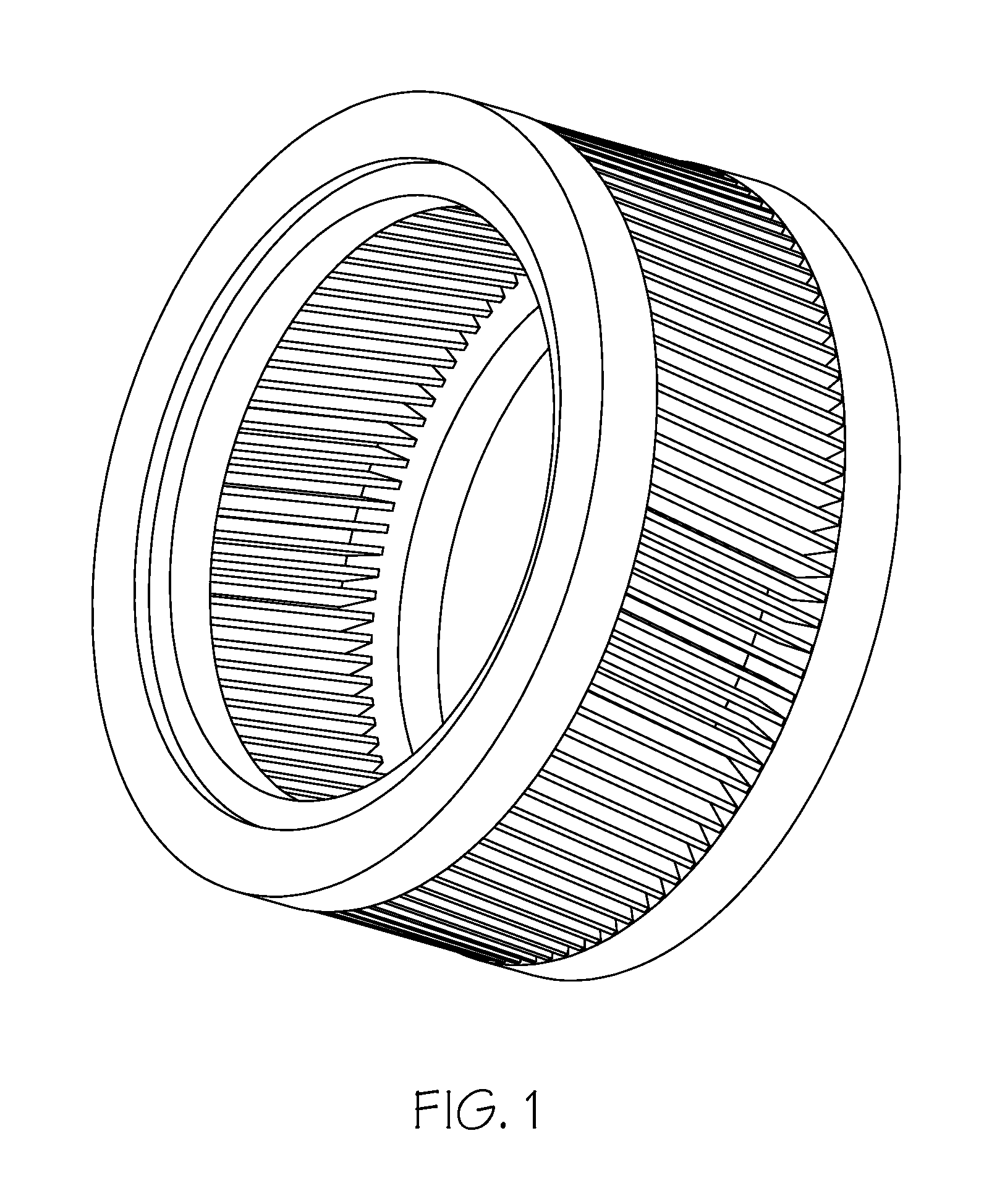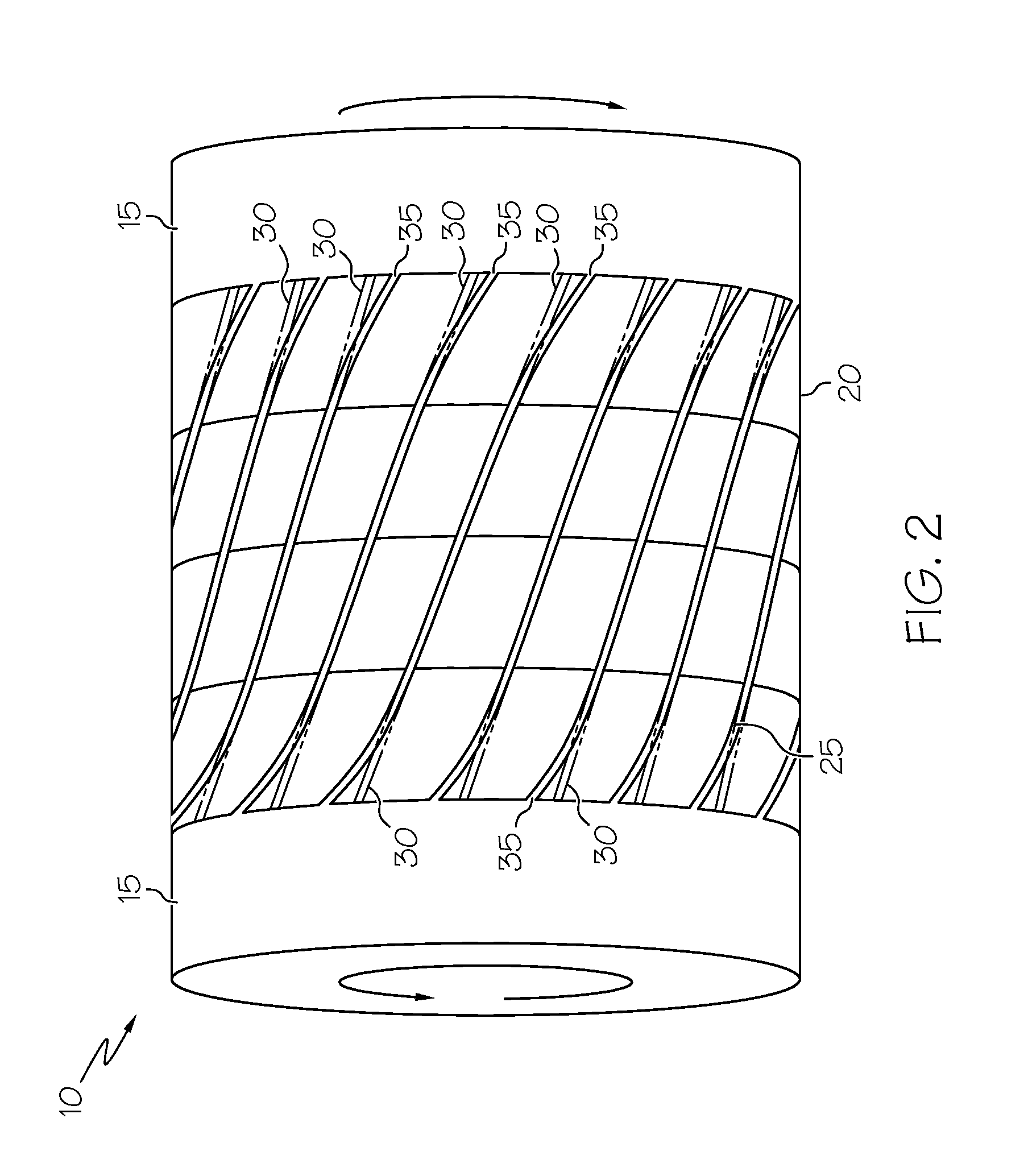Solid phase welding of aluminum-based rotors for induction electric motors
a technology of induction electric motors and solid phase welding, which is applied in the direction of manufacturing cage rotors, synchronous motors, manufacturing tools, etc., can solve the problems of low mechanical properties of cast aluminum rotors (bars and end rings together), low torque to turn shafts and rotors, and fracture between conductor bars and end rings, etc., to achieve high mechanical properties, improve machine durability, and high electrical conductivity
- Summary
- Abstract
- Description
- Claims
- Application Information
AI Technical Summary
Benefits of technology
Problems solved by technology
Method used
Image
Examples
Embodiment Construction
[0042]The present invention utilizes a variation of the friction welding process. Instead of complete rotation as in a typical friction welding process, in the oscillation friction welding process, one of the pieces (either the end rings or the lamination steel stack with the conductor bars) to be joined is oscillated back and forth rapidly with very high frequency (about 20 to about 150 Hz) and small amplitude (about 0.05 to about 3 mm) with normal pressure (about 10 to about 300 MPa) (oscillation friction welding) while the other piece is held stationary. Because of the small contact area and small oscillation distance, heat is generated only in the contact area. The high frequency of the oscillation means the heat is not dissipated.
[0043]There are several important factors involved in making an oscillation friction weld including, but not limited to, oscillation frequency, oscillation amplitude, oscillation path, applied load, and time. The oscillation frequency is related to the...
PUM
| Property | Measurement | Unit |
|---|---|---|
| oscillation frequency | aaaaa | aaaaa |
| pressure | aaaaa | aaaaa |
| porosity | aaaaa | aaaaa |
Abstract
Description
Claims
Application Information
 Login to View More
Login to View More - R&D
- Intellectual Property
- Life Sciences
- Materials
- Tech Scout
- Unparalleled Data Quality
- Higher Quality Content
- 60% Fewer Hallucinations
Browse by: Latest US Patents, China's latest patents, Technical Efficacy Thesaurus, Application Domain, Technology Topic, Popular Technical Reports.
© 2025 PatSnap. All rights reserved.Legal|Privacy policy|Modern Slavery Act Transparency Statement|Sitemap|About US| Contact US: help@patsnap.com



